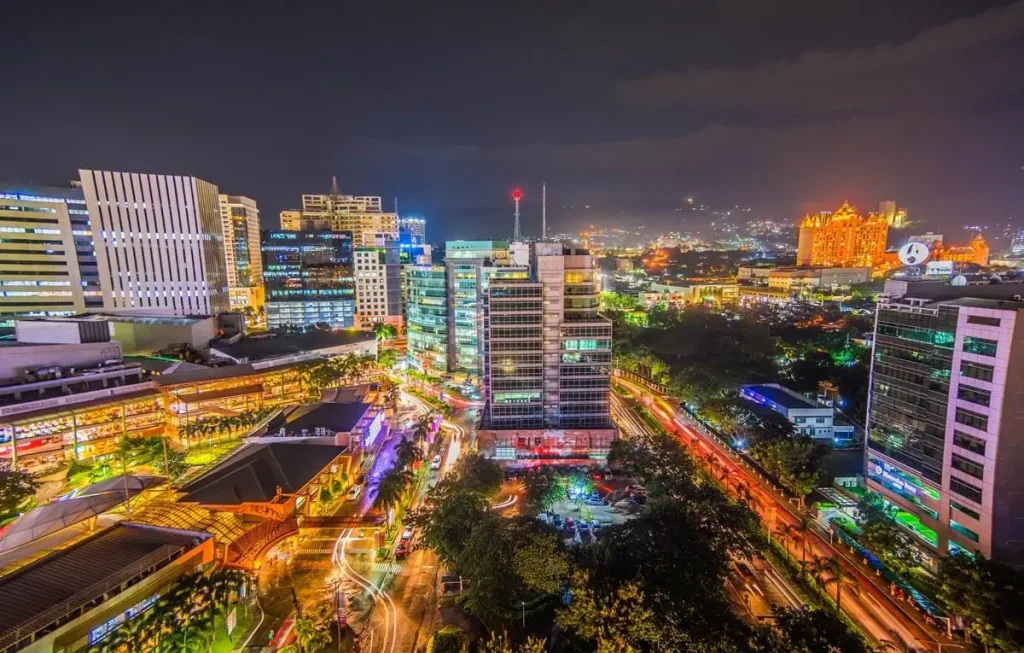 Photo courtesy of Monstera via Pexels
Photo courtesy of Monstera via Pexels
Real estate is one of the best investment options, with its low risk and high reward potential, as well as its safety net against inflation as real estate property values tend to increase over long periods of time.
Demand for residences surged by 21% in the first quarter of 2021 compared to the first half of 2020. This is driven by a desire to invest in a home environment that promotes a secure and pleasant lifestyle. It’s a real estate investment that, in certain cases, is converted into a permanent home wherein the entire family feels safe, comfortable, and stable.
DMCI Homes Leasing Services is here to teach you everything you will need to learn about transferring land titles in the Philippines for you to effectively invest in real estate.
While learning land titles and deeds can sometimes be a bit technical, it is, nonetheless, essential when it comes to property as well as condominium ownership. Knowing how to transfer land titles in the Philippines makes your investment in real estate as secure and worry-free. Lastly, knowing how to check land titles online in the Philippines is now as important as ever as the Land Registration Authority recommends digitizing land titles for safe and faster transactions.
DMCI Homes Leasing services has many properties for rent which are strategically located near key areas that the investor can look into which will certainly help them with their potential investment in the booming business of real estate.
In renting condominiums, you should always know your tenant rights, whether as a tenant or a landlord, in order to not only to secure your investment but also to make the transactions secure and hassle-free!
 Photo courtesy of Pixabay via Pexels
Photo courtesy of Pixabay via Pexels
What is a land title?
A land title refers to the evidence of the owner’s right or extent of interest, by which he can maintain control and as a rule assert the right to exclusive possession and enjoyment of property. It’s a legal document that proves a person owns the property. The primary purpose of transferring land title in the Philippines is safeguarding your ownership rights.
Furthermore, it is to allow you to facilitate the construction of a structure or any other transactions involving the piece of land, as well as to utilize the title as collateral for loans and other bank operations.
A registered title, according to the law, cannot be contested even by hostile, open, and infamous ownership. It is provided as definitive proof of the person whose name appears on it owning the property. As a result, title certificates are deemed binding and conclusive.
Your guide to land titles in the Philippines
The Philippines adopted the system called the Torrens Title. The Torrens Title is a documentation system that records the transfer of land from the previous owner to the new owner. It states the validity of the land title and the legal owner of such land. When the land is conveyed or transferred to another, the new owner will be the one registered in the Torrens Title.
 Photo courtesy of Sora Shimazaki via Pexels
Photo courtesy of Sora Shimazaki via Pexels
Land titles refer to the evidence of the owner’s right or extent of his interest, by which he can maintain control and, as a rule, assert his exclusive possession and enjoyment of the property. What this basically means is that a land title is the evidence of your ownership whereby you can show to people in order for you to assert said ownership. It is important to note that Land titles also apply to condominium ownership.
Two things must be taken into consideration with respect to owning real estate here in the Philippines. These are Transfer Certificate of Title and a Condominium Certificate of Title.
Transfer Certificate of Title otherwise known as Deed of absolute sale, refers to the ownership of the land including the airspace within it.
Condominium Certificate of Title, refers to the document that certifies ownership of a condominium unit which, aside from the geophysical location of the unit, also includes the floor number, the unit number, the measurement, the name of the developer of the property, as well as the name of the unit owner.
Notably, Condominium ownership requires a Condominium Certificate of Title, much like owning a Transfer Certificate of Title as the certificate is a documentary proof of ownership of a person over a condominium unit.
 Photo courtesy of Zen Chung via Pexels
Photo courtesy of Zen Chung via Pexels
How can one acquire a land title?
The simplest method on how to transfer land titles is to sell and execute a document known as a Deed of Sale, which indicates the legal transfer of title from the seller's name to the buyer's name. The Deed of Sale is subsequently taken to the Philippines' Registry of Deeds to be formally recorded. This is also known as a Transfer Certificate of Title. Here are the steps to follow in order to acquire a land title:
- Submit the conveyance instrument and all supporting documents to the entry clerk at the RD. The applicant will receive an electronic primary entry book (EPEB) number, to confirm receipt of the conveyance instrument and supporting documents.
- Pay the corresponding fees. The documents will be turned over to the examiner who will check if all the requirements have been met, after which the information would be encoded.
- If the requirements are complete, the RD approves the applicant.
- A new land title will finally be printed and issued to the applicant.
One important factor, however, that you must consider before acquiring a land title is to make sure that your title is clean to avoid any legal troubles in the future. But how exactly do you know if the title that you have your eyes on is a clean title? Allow us to discuss this point.
How do you know if a title is clean?
With the growth of false land titles and fraudulent land transactions in the Philippines, nothing is more vital than checking the legitimacy of the title or ensuring that there are no limits or legal claims on the property when purchasing real estate holdings there.
Purchasing land is a costly investment, and you don't want your money to be wasted by dealing with a forged land title or purchasing land that might lead to a lawsuit. Hence, you want to make sure that the land you purchased has a clean title.
 Photo courtesy of Cytonn Photography via Pexels
Photo courtesy of Cytonn Photography via Pexels
Here are a few sure-fire ways to make sure that your title is clean:
- Check the paper. The Bangko Sentral ng Pilipinas is the exclusive printer of property title forms. The judicial form employs a paper with numerous security characteristics, with the paper composed of 50% cotton and 50% chemical wood pulp with colored fibers. The texture of the paper is comparable to that of a bank check. Fake title forms are often made of cartolina-like substances or low-quality paper.
- Go to the registry of deeds. Checking the existence of a title with the Registry of Deeds (RD) where the land is located is the best approach to verify its legitimacy. Every city or province in the Philippines has its own RD, which houses the original titles to all registered lands within its borders. Owners of registered lands, on the other hand, receive an Owner's Duplicate Certificate that matches the original title on file with the RD. As a result, a buyer may readily validate the title's legitimacy by comparing it to the RD's only original title on file.
- Go to the Land Registration Authority. The Land Registration Authority is another government institution where you may verify the legitimacy of a title (LRA). The LRA is a national government body that provides registration decrees and land title certificates.
- Consult a lawyer. To ensure that the land you're buying is free of problems, consult with a competent attorney and hire him or her to conduct a due diligence investigation before closing the deal.
- Double-check the description of the property on the land title document. Even if the title is authentic, you should ensure that no other parties have rights to the land. For example, there might be an existing mortgage on the property or it could be the subject of litigation. Look at the back or following pages of the title and ensure there are no entries below the words "Memorandum of Encumbrances," or if there are, that the encumbrances have previously been canceled.
- Check if the real property tax is updated. To ensure that the seller's property tax is up to date, go to the Assessor's Office in the municipality where the property is located.
 Photo courtesy of Sora Shimazaki via Pexels
Photo courtesy of Sora Shimazaki via Pexels
How to transfer land title
A title is the final proof of property ownership in the Philippines. The Philippines implemented the Torrens Title System, land registration, and land transfer systems to document the transfer of property ownership from the original owner who registered it to successive owners.
If you are the buyer, you should understand how to transfer the land title to a new owner. You might wish to do this yourself if you have the time and patience to do so. Alternatively, you can pay a fee to engage the services of a lawyer, a qualified real estate broker, or a title transfer form.
Here are the steps on how you can transfer a land title:
- File and secure the required documents. At the Regional District Office of the Bureau of Internal revenue, you must file and secure the following required documents and papers:
- Notarized deed of absolute sale. The notarized deed of absolute sale must have at least one (1) original copy and two (2) Photocopies;
- Transfer Certificate of Title (TCT). You must have the owner’s duplicate copy as well as two (2) photocopies of the TCT or the CCT if condominium units are being sold.
- Tax Declaration of the Land and Land Improvements. You must have at least two (2) certified true copies of the most recent tax declaration for land and land improvements.
- The Tax Identification Numbers (TIN) of both the seller and the buyer must also be prepared.
 Photo courtesy of Pavel Danilyuk via Pexels
Photo courtesy of Pavel Danilyuk via Pexels - Secure assessment of transfer taxes. After you've completed the proper papers for land transfer, a BIR representative will compute your Capital Gains Tax (CGT) and Documentary Stamp Tax (DST). They will then ask you to sign three (3) copies of Form 1706 of the BIR and Form 2000 of the Bureau of Internal Revenue before submitting them to the Accredited Agent Bank (AAB).
- File documents at the BIR. You will be provided with a claim slip with the claim date of the Certificate Authorizing Registration (CAR), which will be released together with the following documents:
- Original copy of the Absolute Sale Deed, stamped by the BIR as received;
- Duplicate Copy of the TCT or CCT owned by the owner;
- Form 1706 of the BIR and Form 2000 of the Bureau of Internal Revenue original copies, stamped as received by the BIR;
- Copies of the Land and Improvement Tax Declaration.
- Pay the transfer taxes and secure the tax clearance. The transfer tax must be paid to the Treasurer's Office of the city or municipality in which the property is located. The following are the requirements for the payment of transfer taxes:
- Certificate Authorizing Registration (CAR) from the BIR;
- Real property tax clearance from the Treasurer’s Office; and
- Official Receipt from the BIR.
 Photo courtesy of Olya Kobruseva via Pexels
Photo courtesy of Olya Kobruseva via Pexels - Request for the cancellation of the old tax declaration. Following the issuing of the new TCT in the buyer/name, the transferee's final step is to deliver the paperwork to the Local Assessor's Office of the relevant LGU. More specifically:
- A new TCT;
- Certificate Authorizing Registration (CAR);
- Verified/Certified True Copy of the Old TCT;
- Verified copy of the Tax Declaration of the seller/previous owner
The LGU will now invalidate the past tax declarations in the name of the previous owner after verifying the veracity of the documents. As the new owner, the buyer must pay the assessment costs for the issue of the new tax declaration in his name.[1]
After you have complied with all the above-mentioned requirements, you will need some additional documents to finalize your transfer.
 Photo courtesy of Karolina Grabowska via Pexels
Photo courtesy of Karolina Grabowska via Pexels
What additional documents do you need to transfer the land title to your name?
Once the title has been transferred to your name, you must secure the following requirements:
- Deed of Absolute Sale-1 photocopy
- TCT OR CCT-1 photocopy
- CAR-1 photocopy
- Transfer Tax Receipt- 1 photocopy
- Latest Tax Receipt OR Tax Clearance- 1 photocopy
- Conditional Requirement- some local assessors may require additional documents such as the Subdivision Plan if the lot is subdivided, and full-color photos of the house, lot, or condominium unit.
These documents are all physical copies, usually in the form of paper. Now, then since we are in the digital age, that begs the question: Should you digitalize these physical copies?
 Photo courtesy of Pavel Danilyuk via Pexels
Photo courtesy of Pavel Danilyuk via Pexels
Should you digitize your land title?
Yes. You should digitize your land title. As a matter of fact, the Land Registration Authority recommends digitizing land titles for safe and faster transactions. According to the Land Registration Authority, property owners should get digital copies of their original land titles (LRA). The agency once again urged the public to ensure that transactions are quick and secure and that acquiring legitimate copies is simple and dependable.
The digitizing process is as simple as handing over original titles to LRA. The office would next begin the process of converting the papers to a digital format. They asked the public to sign up for title verification not just for digitalization but also for speedier retrieval in commercial transactions.
How long does it take to transfer property ownership?
It usually takes at least three to four months to transfer the land title from the owner to the buyer. Given that you must visit many organizations, including the BIR, Registry of Deeds, Treasurer's Office, and Assessor's Office, in order to transfer the land title document into your name.
 Photo courtesy of RODNAE Productions via Pexels
Photo courtesy of RODNAE Productions via Pexels
What is a ‘mother title’?
Mother title, legally speaking, refers to the initial title that has been granted to the property and recognizes the original landowner. Practically speaking, however, a prospective buyer should be aware that the "original" owner of the land is likely long dead and that all of his or her relatives and heirs are now the legal owners of the property.
If you are currently seeing a mother title, this often indicates that the heirs never followed through on legally dividing the land into the inherited sub lots. Additionally, it has frequently been the case that numerous generations of heirs have never officially registered and named their sub-properties.
What to do when purchasing a lot with a mother title?
When purchasing a lot with a mother title, any party involved in the title transfer procedure for residential property ownership transfers must provide the real estate lawyer with their request together with all necessary supporting documentation, such as current transfer deeds and property tax bills.
 Photo courtesy of energepic.com via Pexels
Photo courtesy of energepic.com via Pexels
How long does it take to process land titles in the Philippines?
Typically, the full procedure takes three to four months. Here in the Philippines, you must fulfill criteria at the Registry of Deeds, BIR, and Assessors Office, unlike in other nations where you would simply travel to one government entity for all title transfer activities. Patience is key. The process of transferring land titles can be tedious as it is very technical. So you must be patient and all you have to do is to follow all the steps and submit/prepare all the required documents and things will go very smoothly. So that in the end, no legal concerns will arise.
Key takeaways
Real estate closings and title transfers from the buyer to the seller are technical procedures that demand active collaboration with the relevant governmental bodies. If these procedures are not followed, ownership and tax compliance legal concerns may develop.
- Remember that proof of your ownership is your land title. Without any land title, you cannot own the land. So, before you buy, always make sure that the seller has the land title and that such land title is clean.
- Digitize your land title as soon as possible. Not only will this make all your future transactions safe, it will also expedite any transaction involving the property covered by the digitized land title. The process of digitization is rather easy as the Land registration authority will simply process your documents into a digital format.
- Follow all the required documents. As these will be your primary weapon inorder to save you from any legal or tax concerns in the future
News and other updates are also posted on the company’s official website and its social media accounts on Facebook, Twitter, Instagram, and YouTube.










